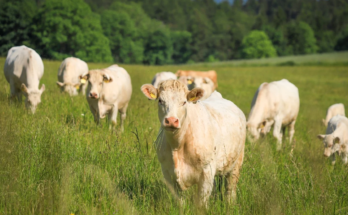Agriculture is a vital sector that supports the livelihoods of millions globally. However, farmers face numerous challenges that can jeopardize their crops, including adverse weather conditions, pests, and diseases. Crop yield insurance provides a safety net, helping farmers mitigate financial losses due to reduced yields. This article delves into the details of crop yield insurance, covering its importance, types, costs, coverage, and the claims process, ensuring farmers have all the necessary information to make informed decisions.
What is Crop Yield Insurance?
Crop yield insurance is a specialized insurance product designed to protect farmers from yield losses resulting from various risks. It compensates farmers when actual crop yields fall below an established threshold, ensuring that they can recover financially and maintain their operations.
Importance of Crop Yield Insurance
- Financial Security: Crop yield insurance protects farmers from unexpected losses, providing a financial buffer that allows them to plan for the future.
- Income Stability: By offering compensation during poor yield years, insurance helps stabilize farmers’ incomes, enabling them to meet financial obligations such as loan repayments and operating costs.
- Encouragement of Sustainable Practices: With insurance in place, farmers may feel more secure in investing in improved farming practices and technology, leading to better crop management and sustainability.
- Rural Economic Support: Protecting farmers’ incomes contributes to the stability of rural economies, supporting local businesses and communities reliant on agriculture.
How Crop Yield Insurance Works
Key Components
- Insured Yield: The expected yield per acre based on historical data. This yield forms the basis for determining coverage and premiums.
- Coverage Level: Farmers select their desired coverage level, typically ranging from 50% to 85% of the insured yield. Higher coverage levels result in higher premiums but offer more extensive protection.
- Premiums: The cost of insurance, calculated as a percentage of the insured value, varies based on crop type, location, and historical yield data.
- Indemnity Payments: When farmers experience yield losses, they file claims. The insurance company assesses the claim and provides payments based on the difference between actual and insured yields.
Types of Risks Covered
Crop yield insurance covers various risks that can lead to yield reductions, including:
- Adverse Weather Conditions: Drought, floods, hailstorms, and frost can severely impact crop yields.
- Pests and Diseases: Insect infestations and crop diseases can lead to significant losses.
- Natural Disasters: Events such as hurricanes, tornadoes, and wildfires can cause extensive damage to crops.
- Market Fluctuations: Although not directly covered, crop insurance helps mitigate financial impacts from reduced yields due to market price drops.
Costs of Crop Yield Insurance
Understanding the costs associated with crop yield insurance is crucial for farmers. Here are the primary cost components:
1. Premiums
Premiums are calculated as a percentage of the insured value based on expected yield. Average premium rates range from 1% to 15% of the insured amount, depending on the crop and associated risks.
Example: For a farmer insuring 100 acres of corn with an expected yield of 150 bushels per acre and an insured value of $5 per bushel, the total insured amount would be $75,000. If the premium rate is 5%, the annual cost would be $3,750.
2. Deductibles
Many policies have a deductible, the amount the farmer must cover before insurance kicks in. Deductibles typically range from 10% to 30% of the loss.
Example: If a farmer experiences a yield loss of 50 bushels per acre and has a 20% deductible, the insurance will cover the loss exceeding that amount.
3. Administrative Fees
Some insurance providers charge administrative fees for managing the policy. These fees can vary but typically range from $50 to $300 annually.
4. Example of Total Costs
For a complete cost overview, consider a farmer insuring 100 acres of corn with the following parameters:
- Insured Yield: 150 bushels/acre
- Insured Value: $5/bushel
- Total Insured Amount: $75,000
- Premium Rate: 5% = $3,750
- Deductible: 20% of 50 bushels/acre (10 bushels/acre covered, meaning the first $1,000 is not covered)
- Administrative Fee: $100
- Total Annual Cost: $3,750 + $100 = $3,850
Factors Influencing Premium Costs
Several factors affect the cost of crop yield insurance premiums:
- Crop Type: Different crops have varying risk profiles. High-risk crops may have higher premiums.
- Geographic Location: Regions prone to specific risks (e.g., drought, floods) may face higher premiums.
- Coverage Level: Higher coverage levels increase premiums.
- Historical Yield Data: Farmers with a history of significant losses may encounter higher premiums.
- Policy Type: Different types of insurance policies have varying premium structures.
Choosing the Right Crop Yield Insurance
Selecting the right crop yield insurance policy involves careful consideration:
1. Assessing Risks
Evaluate specific risks based on location, crop type, and farming practices to determine necessary coverage.
2. Comparing Policies
Review various insurance policies and providers. Look for coverage options, premiums, deductibles, and claims processes.
3. Consulting Experts
Engage with insurance agents or agricultural experts for insights on suitable insurance options.
4. Financial Considerations
Assess financial capacity to determine how much premium can be afforded while ensuring adequate coverage.
5. Understanding Claims Process
Familiarize yourself with the claims process, including necessary documentation and timelines for compensation.
The Claims Process
The claims process is initiated when a farmer experiences a yield loss. Here’s how it works:
1. Notification
Farmers must notify the insurance provider of a yield loss as soon as possible, typically within 72 hours of discovery.
2. Documentation
Gather relevant documents, including yield records, management practices, and evidence of loss causes.
3. Adjuster Inspection
An insurance adjuster will inspect the farm to assess the loss and verify the farmer’s claims.
4. Claims Decision
After the inspection, the insurer determines the validity of the claim and calculates the indemnity payment.
5. Payment
Upon approval, the insurance company issues a payment based on the policy terms and the assessed loss.
Crop yield insurance is an essential tool for farmers, providing financial protection against unpredictable agricultural risks. By understanding the various aspects of crop yield insurance, including coverage options, costs, and the claims process, farmers can make informed decisions that protect their livelihoods.
Investing in crop yield insurance not only safeguards individual farmers but also supports the overall health of the agricultural industry. As climate change and market volatility pose ongoing challenges, securing adequate insurance coverage is vital for ensuring food security and promoting sustainable agricultural practices.
By choosing the right insurance policies and understanding their importance, farmers can navigate the uncertainties of agriculture with confidence, contributing to resilient rural economies and communities.




